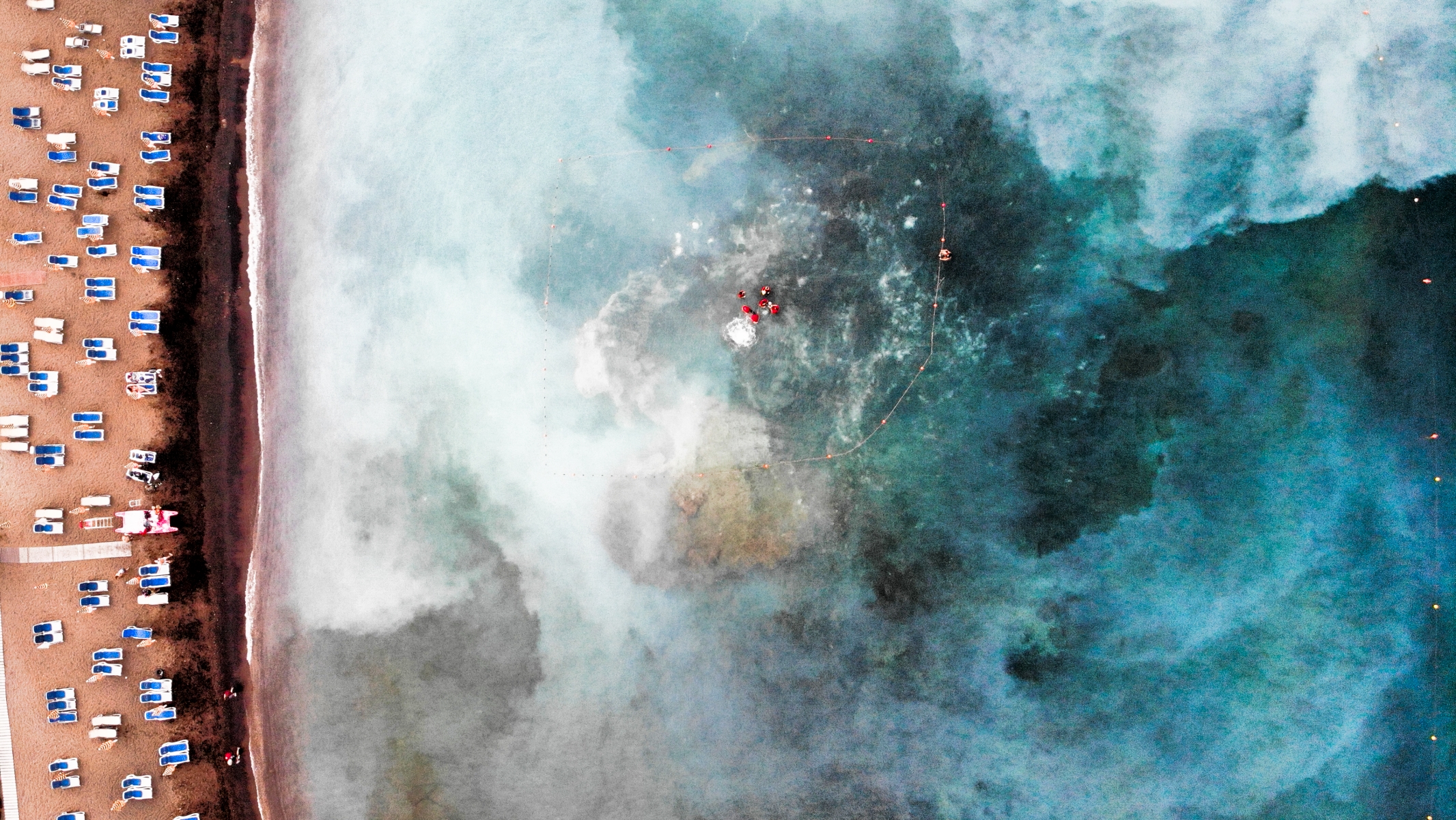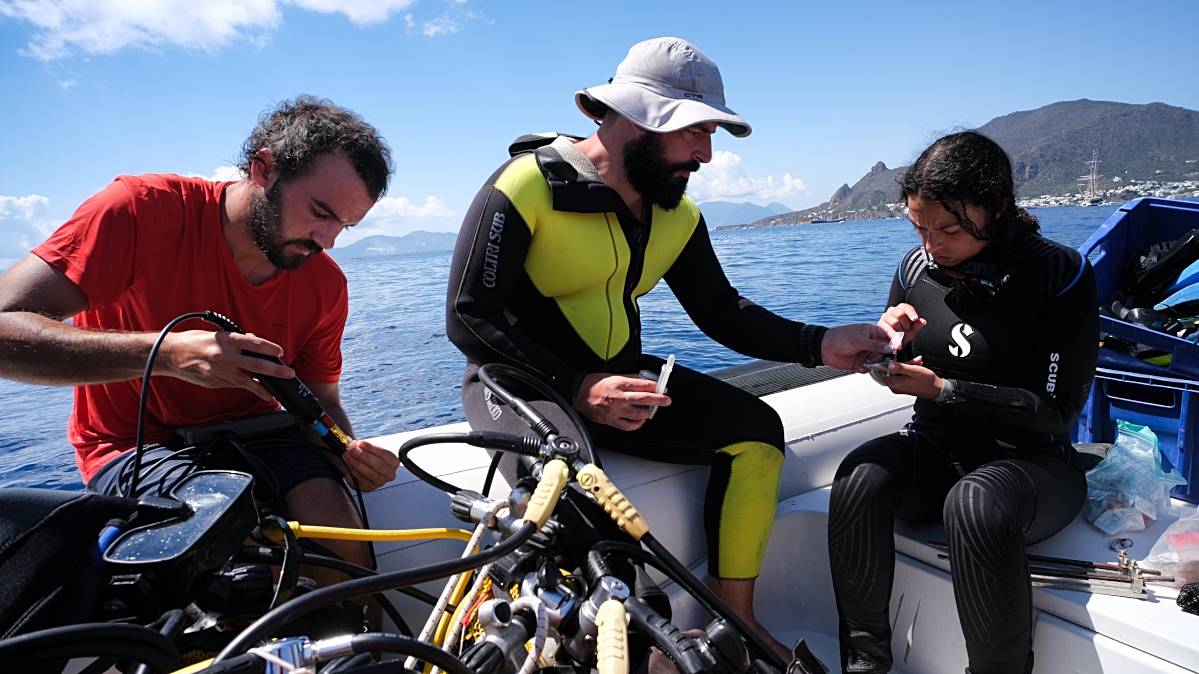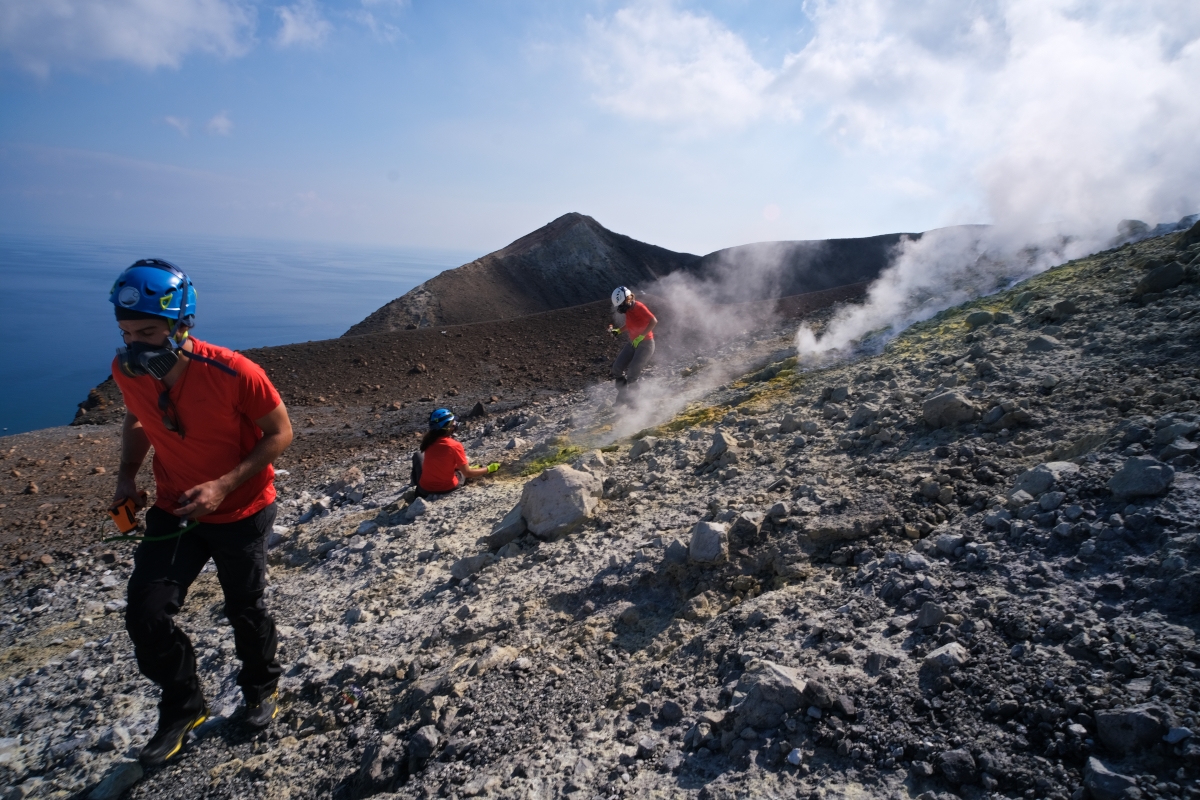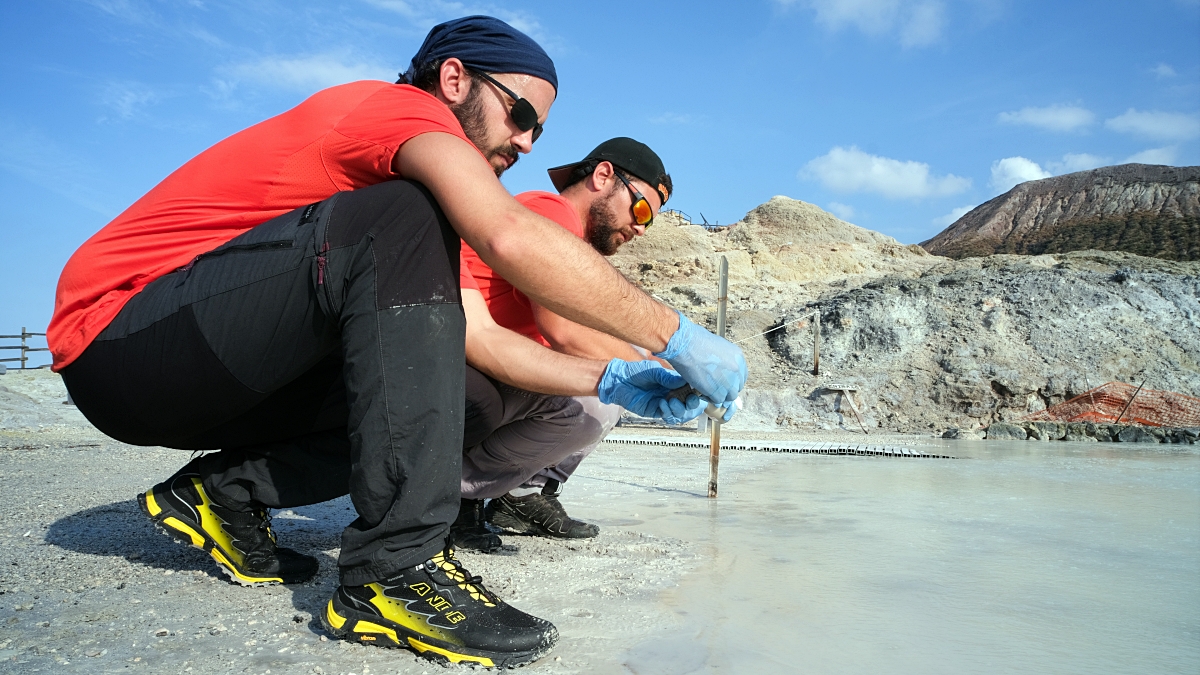4 min to read
Aeolian archipelago expedition
Report of CoEvolve field work in the Aeolian archipelago, Sicily.

The Aeolian volcanic archipelago is situated in the southeastern part of the Tyrrhenian Sea, 20 km off the north coast of Sicily and 55 km from the Italian mainland, in the Mediterranean Sea. The Aeolian archipelago islands represent a volcanic arc, corresponding to subaerial culminations of mainly submerged volcanic edifices rising 2000–2500 m above the Southern Tyrrhenian seafloor. Magmatism in this region started around 1.3 million years ago and cohesively reflects the combination of tectonic related influences typical of the Aeolian archipelago. The two volcanoes still active, Vulcano and Stromboli. Stromboli has continuous regular spurts of lapilli, bombs, and blazing gas, while Vulcano presents violent explosions at longer intervals, forming a high cloud of ash. Shallow marine hydrothermal vents are ubiquitous off the coasts of the Aeolian Islands. The most active marine hydrothermal venting occurs close to the eastern coast of Panarea, where gasses (mainly CO2 and H2S) and thermal waters create an entire ecosystem hosting microorganisms which aggregate to form white mats (the so called biofilms) extensively widespread over the area.

Although the Aeolian islands’ intense hydrothermal and geothermal activity is well known, studies about the microbial life inhabiting these volcanic - extreme environments is still a missing piece. In this expedition we collected samples of deeply-sourced fluids and surface springs sediments, trying to explore the microbiology from the surface to the depth and understand the “fil rouge” leading to the CoEvolution between Life and Earth in these extreme environments. Our team consisted of six microbiologists, Donato Giovannelli, Matteo Selci, Bernardo Barosa, Deborah Bastoni, Francesco Montemagno and myself, carrying out the fluids and sediment sampling. We were supported by the INGV geologists; and a scientific journalist, Jacopo Pasotti, who followed us throughout the expedition in order to document and record significant moments. The expedition took place in 9 days, during which we sampled 15 different sites, including seeps and fumaroles in Panarea, Stromboli, Vulcano and Lipari islands.

Every site that we explored was a surprise: we had to immerse in hot/cold water, dive, get dirty with mud, climb and face any obstacle imposed by the wild and uncontaminated nature of these places. Often the hot and humid climate has slowed us down, but never stopped us. At the end of the expedition, we collected 15 samples of fluids, sediments and biofilms (microbial mats). They will be used to characterize the microbiology and the geochemistry of these environments. We also collected the gaseous emissions of each site through particular glass bottles called “Giggenbach” (read more in this article) and then using copper tubes and special accessories we trapped fluids and the dissolved gasses to be analyzed by Peter Barry of the Woods Hole Oceanographic Institution (USA). In each site we measured the chemical-physical environmental variables such as pH, temperature, salinity, conductivity, dissolved oxygen, dissolved hydrogen sulfide, alkalinity, total dissolved solids and oxidation reduction potential. All these parameters will help us to characterize the environment the microbes live in. We expect to find a microbiology which cohesively reflects the geological and geochemical features of each site. Our future perspective is to identify clear trends between the presence and the abundance of some microorganisms and some of the geo-physico-chemical element concentrations in each site, or detect and isolate new mysterious microbes. This would be amazing.

Indeed, at the end of the expedition, our samples have been taken to the laboratory where specific analyses will be performed, such as molecular (DNA extraction and PCR amplification) and geochemical (elemental analysis and trace elements evaluation) analyses. Thus, from each sediment and fluid samples we will extract DNA and amplify a conserved genomic region (16S rRNA gene) through a Polymerase Chain Reaction (PCR). This last step is important to make numerous copies of the conserved genomic region present on our extracted DNA, whose sequence will reveal, through phylogenetic analyses, the belonging of each microorganism found in the sites to a specific taxonomic group. In addition, the resulting sequences will be used to perform a meta-genomic analysis, enabling us to evaluate the main metabolisms in each sample. On the other hand, geochemical analysis will be performed for each sample, through particular instruments such as the Elemental Analyzer and the ICP-MS (Inductively Coupled Plasma Mass Spectrometer). We will evaluate the total carbon, nitrogen and sulfur content using the Elemental Analyzer, while the trace elements concentration will be detected with the ICP-MS. These data, requiring a number of laboratory processes, together with the gas geochemistry results, will allow us to take a look at the intricate web of connections between Life and Earth, evaluating the physico-chemical parameters, gasses, ions, organic or inorganic compounds, as potential drivers for microbial diversity in each seep or fumarole along the volcanic arc of Aeolian Islands.
Fotos: Jacopo Pasotti, 2023
